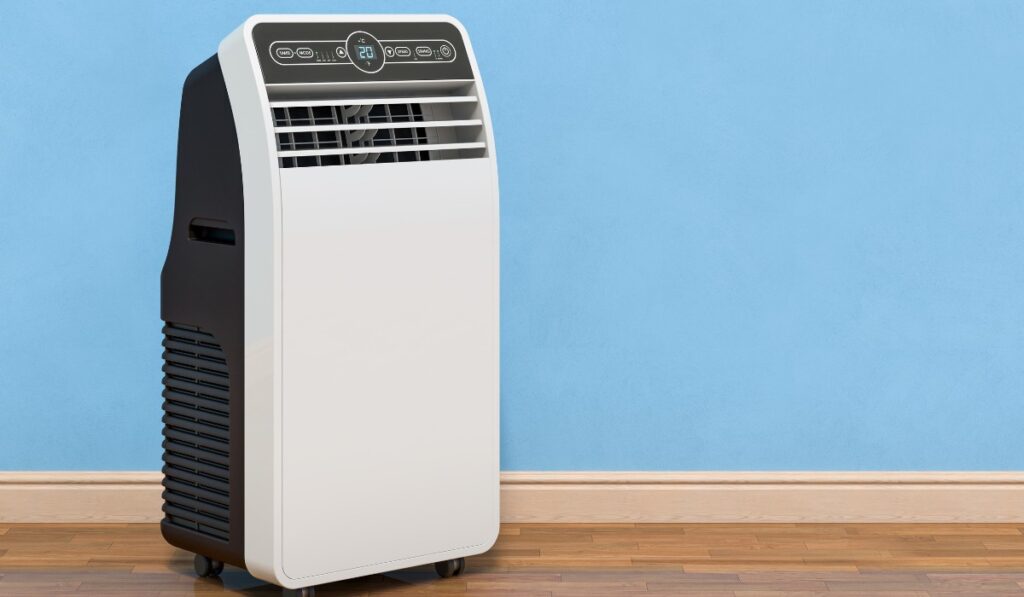Are you tired of sweltering in the summer heat? Do you dread the high energy bills that come with running a central air conditioning system? Look no further than portable air conditioners – a convenient, energy-efficient, and cost-effective solution for beating the heat. In this comprehensive guide, we’ll explore everything you need to know about these versatile cooling units, from their benefits to their operation, and help you make an informed decision when it comes to keeping your space cool and comfortable.
What are Portable Air Conditioners?
Portable air conditioners, as the name suggests, are self-contained cooling units designed to be easily moved from one room to another. Unlike window units or central air conditioning systems, these compact appliances require no permanent installation, making them an ideal choice for apartments, dorms, or any space where traditional air conditioning is not an option.
The Benefits of Portable Air Conditioners
1. Easy Installation and Portability
One of the biggest advantages of portable air conditioners is their ease of installation and portability. With no need for complex ductwork or permanent fixtures, these units can be set up in minutes, allowing you to enjoy cool, refreshing air almost instantly. Simply roll the unit into the desired room, vent the exhaust hose through a window or wall, and you’re ready to go.
2. Energy Efficiency and Cost Savings
Portable air conditioners are designed to cool only the space they’re in, making them more energy-efficient than central air conditioning systems that cool an entire home. By targeting specific rooms or areas, you can save significantly on energy costs while still enjoying comfortable temperatures.
3. Versatility and Flexibility
Whether you live in a small apartment, a dorm room, or a home without central air conditioning, portable air conditioners offer a versatile solution. Their compact size and mobility allow you to move them from room to room as needed, ensuring you can stay cool wherever you are.
How Do Portable Air Conditioners Work?

The Cooling Process
Portable air conditioners work on the same principle as their larger counterparts: they remove heat and moisture from the air inside a room and expel the hot air outside through an exhaust hose.
The process typically involves the following steps:
- Intake: The unit draws warm air from the room through an intake vent.
- Cooling and Dehumidification: The warm air passes over a cold evaporator coil, where it is cooled and dehumidified. This process also condenses moisture from the air, which is collected in a drain pan or reservoir.
- Exhaust: The now cool, dry air is circulated back into the room, while the hot air is expelled outside through an exhaust hose.
Key Components
To understand how portable air conditioners work, it’s important to know their key components:
- Compressor: This is the heart of the air conditioning unit, responsible for circulating the refrigerant that cools the air.
- Condenser: This coil releases the heat absorbed from the room to the outside air.
- Evaporator: This coil absorbs heat from the air inside the room, cooling it in the process.
- Fan: The fan draws in warm air from the room and circulates the cooled air back into the space.
- Exhaust Hose: This hose expels the hot air from the unit to the outside, typically through a window or wall opening.
Choosing the Right Portable Air Conditioner
When selecting a portable air conditioner, several factors should be taken into account to ensure you get the right unit for your needs:
1. Room Size
The cooling capacity of portable air conditioners is measured in British Thermal Units (BTUs). The larger the room, the higher the BTU rating required to effectively cool the space. Consult the manufacturer’s guidelines or a BTU calculator to determine the appropriate BTU rating for your room size.
2. Energy Efficiency
Look for units with high Energy Efficiency Ratings (EER) or Seasonal Energy Efficiency Ratios (SEER). The higher the rating, the more energy-efficient the unit will be, potentially saving you money on your utility bills.
3. Noise Level
Portable air conditioners can vary in noise levels, with some units being quieter than others. If you plan to use the unit in a bedroom or living area, consider choosing a model with a lower decibel rating for a more peaceful environment.
4. Drainage System
Most portable air conditioners require periodic draining of the condensate water collected during the cooling process. Look for units with a self-evaporating or continuous drainage system to minimize the need for manual draining.
5. Additional Features
Some portable air conditioners come with additional features like remote controls, programmable timers, and multiple fan speeds, which can enhance your comfort and convenience.
Tips for Efficient Use of Portable Air Conditioners
1. Proper Ventilation
Ensuring proper ventilation is crucial for the efficient operation of your portable air conditioner. Always follow the manufacturer’s instructions for venting the exhaust hose to the outside, and make sure the vent opening is clear of any obstructions.
2. Regular Maintenance
Like any appliance, portable air conditioners require regular maintenance to function at their best. Clean or replace the air filters regularly, and follow the manufacturer’s recommendations for cleaning the coils and draining the condensate water.
3. Energy-Saving Strategies
To maximize energy efficiency and save on utility bills, consider the following strategies:
- Use the unit’s energy-saving or eco mode when possible.
- Set the thermostat to a comfortable temperature, typically between 72°F and 78°F.
- Close blinds or curtains during the hottest parts of the day to reduce heat gain.
- Turn off the unit when you’re not in the room or when the outdoor temperature is cooler.
4. Proper Placement
Position your portable air conditioner in a central location in the room, away from direct sunlight and obstructions that could block airflow. Ensure that the air intake and exhaust vents are not obstructed by furniture or other objects.
Common Misconceptions About Portable Air Conditioners

Despite their growing popularity, there are still some misconceptions surrounding portable air conditioners. Let’s address a few of them:
1. “Portable Air Conditioners are Noisy”
While older models may have been noisier, modern portable air conditioners are designed to operate at much lower noise levels, often comparable to a household fan on a medium setting.
2. “They Consume a Lot of Energy”
When used correctly and sized appropriately for the room, portable air conditioners can be quite energy-efficient, especially when compared to cooling an entire home with a central air conditioning system.
3. “They’re Difficult to Install”
Portable air conditioners are designed for easy installation, requiring no permanent fixtures or complex ductwork. In most cases, you simply need to vent the exhaust hose through a window or wall opening.
Maintaining and Troubleshooting Portable Air Conditioners
To ensure your portable air conditioner operates at peak performance and has a long lifespan, regular maintenance is essential. Here are some tips for maintaining and troubleshooting your unit:
1. Air Filter Cleaning
Clogged air filters can significantly reduce the efficiency of your portable air conditioner. Clean or replace the filters according to the manufacturer’s recommendations, typically every few weeks or months.
2. Coil Cleaning
Over time, the evaporator and condenser coils can become dirty, reducing the unit’s cooling capacity. Follow the manufacturer’s instructions for cleaning these coils, or consider having a professional service technician perform this maintenance.
3. Condensate Drain
Depending on the model, you may need to periodically drain the condensate water collected during the cooling process. Follow the manufacturer’s instructions for proper draining and cleaning of the condensate drain.
4. Troubleshooting Common Issues
If your portable air conditioner is not cooling properly, there are a few common issues to troubleshoot:
- Check the air filters and clean or replace them if necessary.
- Ensure the exhaust hose is properly vented and free of obstructions.
- Check the thermostat settings and adjust as needed.
- If the unit is making unusual noises or displaying error codes, consult the owner’s manual or contact the manufacturer for assistance.
Best HVAC Services in Los Angeles, CA
If you’re in the Los Angeles area and looking for top-notch HVAC services, including installation, maintenance, and repair of portable air conditioners, look no further than TOP AC Inc. Our team of highly trained and experienced technicians is dedicated to providing you with the best cooling solutions tailored to your specific needs. Contact us today to schedule a consultation and experience the ultimate in comfort and energy efficiency.

